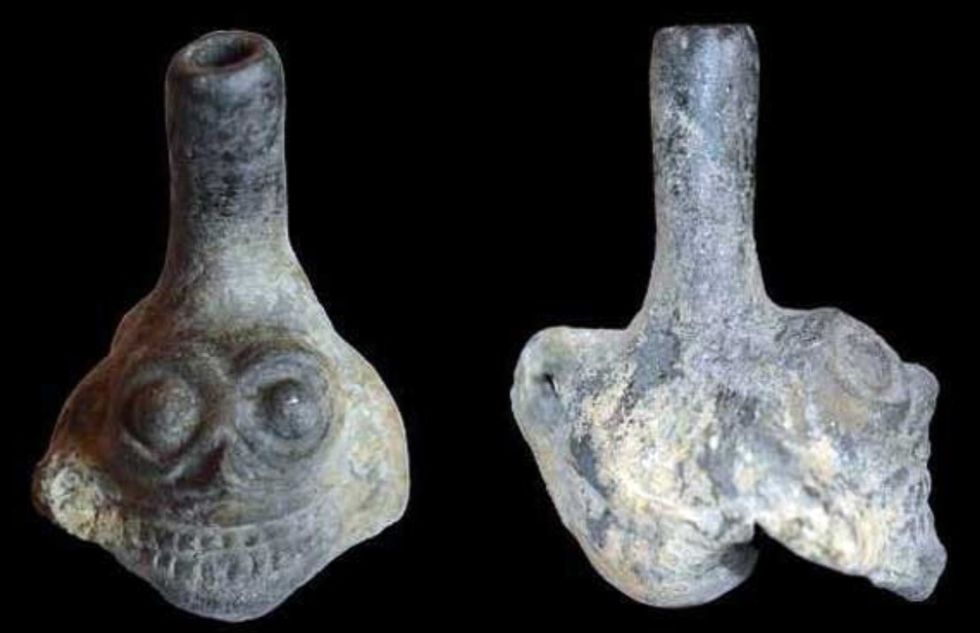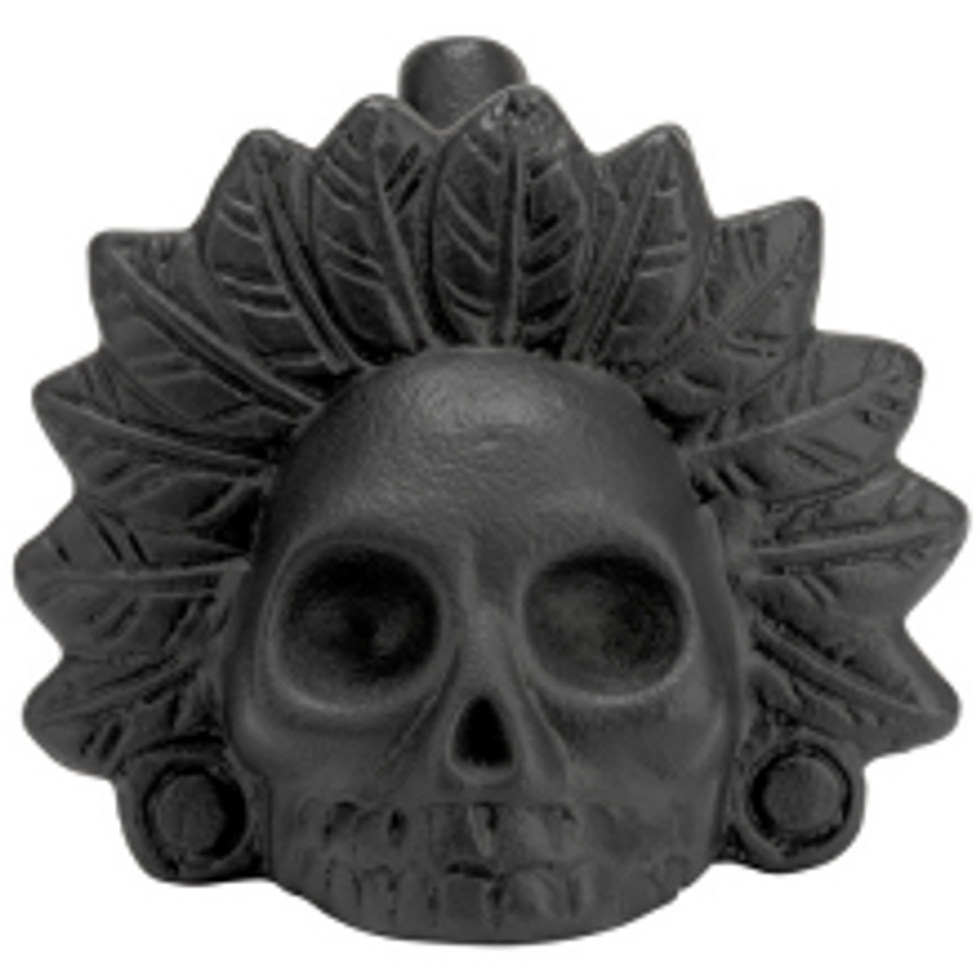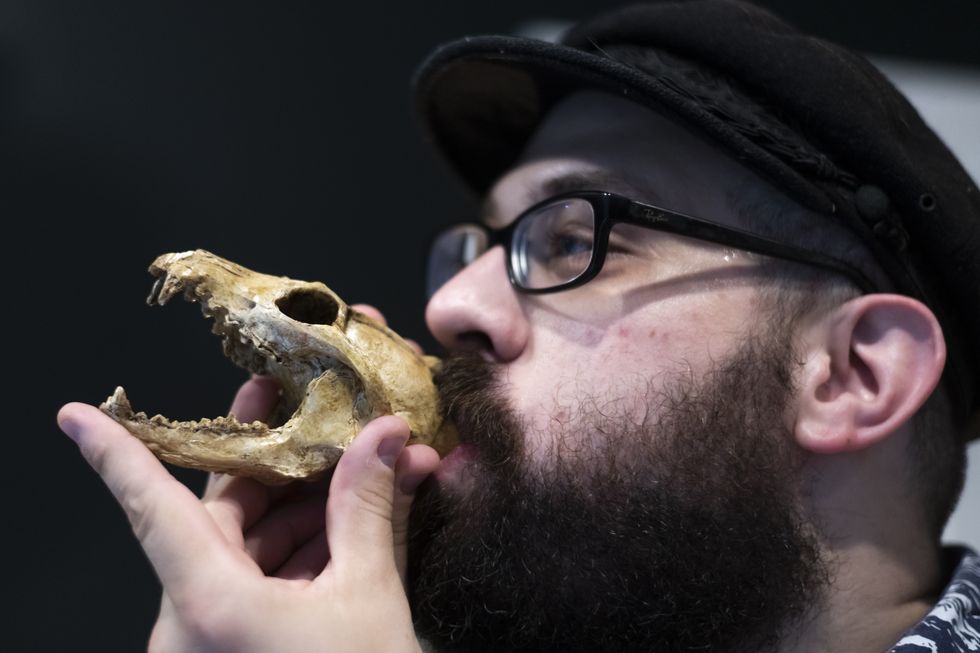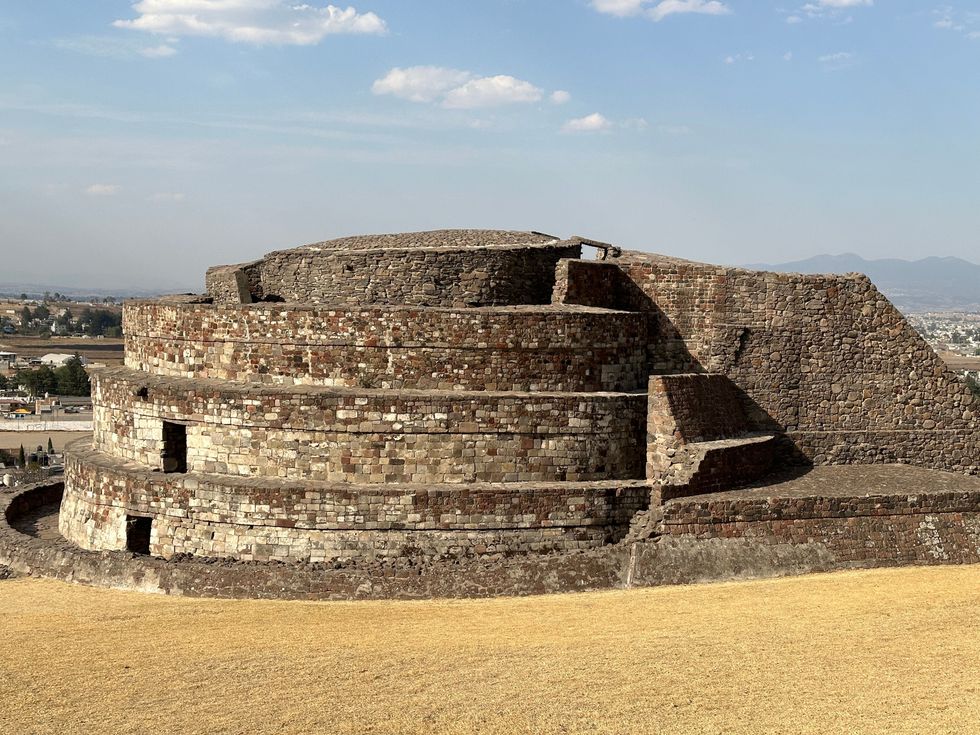A terrifying ancient instrument known as the Aztec death whistle, which produces a sound described as the “scream of a thousand corpses”, remains just as frightening to modern listeners as it was 500 years ago, according to new research.
Scientists at the University of Zurich have discovered that the chilling noise, which combines a spooky gust of whistling wind with human-like screams, triggers intense fear responses in listeners’ brains.
“The sound is rough and high-pitched, and as listeners, you usually do not like such sounds”, explains lead author Professor Sascha Frühholz.
The haunting wail was often the final sound heard by victims of human sacrifice in ancient Aztec ceremonies.

The Aztec Death Whistle produces the ‘scream of a thousand corpses’
Wikimedia Commons
The Death Whistle, crafted from clay and shaped like a human skull, has been discovered in Aztec grave sites dating from 1250 to 1521 AD.
For years, archaeologists were puzzled by these unusual artefacts until one researcher made the bold decision to blow into the opening at the top.
The resulting sound was a piercing wail that bore an uncanny resemblance to human screams.
These mysterious instruments have been found alongside ritual sacrifice victims, though their exact purpose remained unclear to researchers.
MORE ARCHAEOLOGY BREAKTHROUGHS:
- Earliest inscription declaring ‘Jesus is God’ discovered in Israel
- Archaeologists make ‘remarkable discovery’ buried under streets of London
- Archaeology breakthrough as ancient battle site discovered using spy satellites

The Death Whistle is crafted from clay and shaped like a human skull
Wikimedia Commons
Some experts suggested they may have been used to strike fear into enemies during battle, whilst others believed they played a crucial role in sacrificial ceremonies.
To understand modern reactions to the death whistle, researchers conducted tests on European volunteers whilst monitoring their brain activity through functional magnetic resonance imaging (fMRI).
Participants listened to recordings of both genuine and replica death whistles while describing their emotional responses.
The results showed the sound-activated neural regions associated with core emotions like rage, fear, and grief.
Listeners consistently reported strong negative emotional responses, with the whistle’s effect comparable to firearms, sirens and shouts of pain.
Professor Frühholz noted: “With fMRI we found that the sounds have both an affective [emotional] nature and they have a more abstract and symbolic nature, which triggers associative mechanisms in the brain.”

Someone blowing into an Aztec death whistle
Getty

Ehecatl-Quetzalcoatl temple
Getty Images
The sound temporarily confused listeners’ brains, leaving them momentarily stunned.
Previous studies revealed that the death whistle creates multiple tones simultaneously as air collides within its chambers.
The whistle’s acoustic profile contains elements found in primate screams and “terrifying music”, made more intense by incorporating tones typical of human speech.
Archaeologists have discovered these whistles at ritual sites, including the Ehecatl-Quetzalcoatl temple in Mexico City.
The skull design may represent Mictlantecuhtli, the Aztec Lord of the Underworld.
“Given both the aversive/scary and associative/symbolic sound nature as well as currently known excavation locations at ritual burial sites with human sacrifices, usage in ritual contexts seems very likely”, Professor Frühholz and his colleagues write.
The whistles may have been used to frighten both sacrifice victims and ceremonial audiences, but scientists say further research is needed to support this.